
Digital Marketing Blogs
"Let's Learn, Explore, and Connect to the World"

Instagram Reels & Stories: Harnessing the Power of Short-Form Video Content for Engagement and Reach
- Jenelie Hijosa
- Digital Marketing (Digital Business)

Introduction
 In today’s fast-paced digital world, Instagram stands as a beacon for influencers, brands, and creators seeking to captivate and engage their audience. At the heart of Instagram’s vast array of features, Reels and Stories shine brightly, offering a dynamic platform for short-form video content. This blog dives deep into the transformative power of Instagram Reels and Stories, highlighting their unmatched potential to boost user engagement and expand reach across the globe.
In today’s fast-paced digital world, Instagram stands as a beacon for influencers, brands, and creators seeking to captivate and engage their audience. At the heart of Instagram’s vast array of features, Reels and Stories shine brightly, offering a dynamic platform for short-form video content. This blog dives deep into the transformative power of Instagram Reels and Stories, highlighting their unmatched potential to boost user engagement and expand reach across the globe.
The allure of short-form video is undeniable. It combines the immediacy of visual storytelling with the brevity that today’s audience craves. Instagram has adeptly incorporated these elements into Reels and Stories, providing tools that not only allow for creative expression but also foster a deep connection with viewers. As we explore the capabilities and strategies associated with these features, it becomes clear that mastering Reels and Stories can be a game-changer for anyone looking to leave a mark on the digital landscape.
 This journey through Instagram’s video content landscape is more than a guide; it’s an invitation to unlock the full potential of your digital presence. By understanding the core principles of engaging short-form video creation, leveraging the unique attributes of Reels and Stories, and implementing best practices for maximizing reach and engagement, readers will be equipped to elevate their Instagram game to new heights. Let’s embark on this adventure together, discovering the keys to success in the realm of Instagram Reels and Stories.
This journey through Instagram’s video content landscape is more than a guide; it’s an invitation to unlock the full potential of your digital presence. By understanding the core principles of engaging short-form video creation, leveraging the unique attributes of Reels and Stories, and implementing best practices for maximizing reach and engagement, readers will be equipped to elevate their Instagram game to new heights. Let’s embark on this adventure together, discovering the keys to success in the realm of Instagram Reels and Stories.
Understanding Instagram Reels and Stories
What Are Instagram Reels?
 Instagram Reels is a feature that allows users to create and share short-form videos, up to 60 seconds long, on their profiles, the Reels tab, and the Explore page. This functionality was introduced as Instagram’s answer to the rising popularity of short video content, especially in response to the global success of TikTok. Reels offer a plethora of editing tools including AR effects, speed controls, and the ability to align multiple clips for seamless transitions, providing a rich canvas for creativity and storytelling.
Instagram Reels is a feature that allows users to create and share short-form videos, up to 60 seconds long, on their profiles, the Reels tab, and the Explore page. This functionality was introduced as Instagram’s answer to the rising popularity of short video content, especially in response to the global success of TikTok. Reels offer a plethora of editing tools including AR effects, speed controls, and the ability to align multiple clips for seamless transitions, providing a rich canvas for creativity and storytelling.
 A key feature of Instagram Reels is its integration within the Instagram ecosystem, allowing users to reach their existing followers and the broader Instagram community through the Explore page. This contrasts with standalone platforms like TikTok, where content discovery is primarily feed-based. Reels also benefit from Instagram’s wide array of music and audio options, enabling creators to add a soundtrack from a vast library or use their own original audio.
A key feature of Instagram Reels is its integration within the Instagram ecosystem, allowing users to reach their existing followers and the broader Instagram community through the Explore page. This contrasts with standalone platforms like TikTok, where content discovery is primarily feed-based. Reels also benefit from Instagram’s wide array of music and audio options, enabling creators to add a soundtrack from a vast library or use their own original audio.
 Comparatively, Reels focuses on enhancing the social media experience of existing Instagram users by offering an additional format for expression and engagement. Unlike TikTok, which was built specifically for short-form video content, Reels is part of a multifunctional platform, offering users a more integrated and versatile content creation experience. This strategic positioning leverages Instagram’s massive user base, providing a familiar environment for users to explore and create short-form videos.
Comparatively, Reels focuses on enhancing the social media experience of existing Instagram users by offering an additional format for expression and engagement. Unlike TikTok, which was built specifically for short-form video content, Reels is part of a multifunctional platform, offering users a more integrated and versatile content creation experience. This strategic positioning leverages Instagram’s massive user base, providing a familiar environment for users to explore and create short-form videos.
What Are Instagram Stories?
 Instagram Stories is a feature that enables users to post photos and videos that vanish after 24 hours, a concept first popularized by Snapchat. Since its introduction, Stories has become a staple of daily social media use, allowing for spontaneous, less polished content compared to the more curated posts typically found on users’ profiles. Key features of Stories include the ability to add text, stickers, polls, and other interactive elements, making it a highly engaging format for real-time communication and feedback from followers.
Instagram Stories is a feature that enables users to post photos and videos that vanish after 24 hours, a concept first popularized by Snapchat. Since its introduction, Stories has become a staple of daily social media use, allowing for spontaneous, less polished content compared to the more curated posts typically found on users’ profiles. Key features of Stories include the ability to add text, stickers, polls, and other interactive elements, making it a highly engaging format for real-time communication and feedback from followers.
 The ephemeral nature of Stories creates a sense of urgency and exclusivity, encouraging more frequent checking and interaction from viewers. This transient aspect significantly impacts viewer engagement, as content that is available for a limited time often feels more personal and immediate. Stories are particularly effective for sharing behind-the-scenes content, limited-time offers, or quick updates, fostering a closer connection between creators and their audiences.
The ephemeral nature of Stories creates a sense of urgency and exclusivity, encouraging more frequent checking and interaction from viewers. This transient aspect significantly impacts viewer engagement, as content that is available for a limited time often feels more personal and immediate. Stories are particularly effective for sharing behind-the-scenes content, limited-time offers, or quick updates, fostering a closer connection between creators and their audiences.
 Unlike Reels and other short-form video platforms that prioritize entertainment and discoverability, Instagram Stories emphasizes interaction and connectivity. It offers a unique blend of temporal content with interactive features, standing out as a tool for maintaining and deepening relationships with followers. By combining the fleeting nature of Stories with the broad reach and social connectivity of Instagram, this feature manages to capture the fleeting moments of everyday life, making them shareable and engaging in a way that complements the more enduring content shared through posts and Reels.
Unlike Reels and other short-form video platforms that prioritize entertainment and discoverability, Instagram Stories emphasizes interaction and connectivity. It offers a unique blend of temporal content with interactive features, standing out as a tool for maintaining and deepening relationships with followers. By combining the fleeting nature of Stories with the broad reach and social connectivity of Instagram, this feature manages to capture the fleeting moments of everyday life, making them shareable and engaging in a way that complements the more enduring content shared through posts and Reels.
The Importance of Short-Form Video Content
Engagement Metrics

In the ever-evolving landscape of digital marketing and social media, short-form videos have emerged as a potent tool for captivating audiences and fostering engagement. Studies and analytics have consistently demonstrated that short-form video content, notably Instagram Reels and Stories, outperforms other content types across various engagement metrics, including likes, comments, shares, and overall view time.
This heightened engagement can be attributed to the concise, dynamic nature of short-form videos, which cater to the decreasing attention spans of digital audiences. They offer instant gratification and are easily consumable, making them more likely to be watched in full and shared across platforms. Moreover, the interactive features available in Reels and Stories, such as polls, questions, and CTAs (Calls to Action), further enhance viewer interaction, encouraging active participation rather than passive consumption.
Successful Reels often leverage trending music, challenges, and creative editing effects to create content that is not only entertaining but also resonates on a personal level with viewers. For instance, a Reel showcasing a simple DIY home project with step-by-step instructions set to a popular song can garner significant engagement and shares, inspiring viewers to try the project themselves and share their own creations. Similarly, Stories that use questions or polls to solicit feedback on new products or services can lead to higher engagement rates, as they invite direct interaction from the audience.
Examples of high engagement in short-form video content are abundant across various niches, from fitness instructors offering quick workout tips to chefs sharing short cooking tutorials. These videos often achieve viral status, propelled by the algorithm’s preference for video content, leading to increased visibility and engagement beyond the creator’s existing follower base.
Reach and Discovery

Instagram’s algorithm plays a pivotal role in determining the visibility of content on the platform, with a pronounced preference for video content, particularly Reels. This algorithmic favoritism is part of Instagram’s broader strategy to compete with other short-form video platforms and to encourage users to engage more deeply with video content. As a result, Reels and Stories have become invaluable tools for users seeking to expand their reach and discoverability on the platform.
To maximize the potential of Instagram’s algorithm, creators must employ strategic use of hashtags, location tags, and collaborations. Hashtags serve as navigational beacons, guiding Instagram’s algorithm to categorize content and present it to users with aligned interests. By incorporating relevant and trending hashtags, creators can significantly increase the chances of their content being discovered by new audiences.
Location tags add another layer of discoverability, especially for businesses and creators looking to attract a local audience. When users search for or explore content related to a specific location, tagged posts and Stories are more likely to appear, enhancing local visibility and engagement.
Collaborations and partnerships with other creators or brands can also amplify reach and discovery. Through shared content and cross-promotion, both parties benefit from exposure to each other’s audiences, often leading to a mutual increase in followers and engagement. This strategy not only broadens reach but also introduces diversity and freshness to the content, keeping the audience engaged and intrigued.
Implementing these strategies effectively requires a nuanced understanding of the platform’s algorithm and audience preferences. By aligning content creation with these insights, creators can harness the full potential of Instagram’s short-form video features to achieve unparalleled engagement and reach.
Creating Compelling Content with Reels and Stories
Content Ideas for Reels
In the vibrant world of Instagram, Reels offer a canvas for creativity and connection. To stand out, content creators must continually innovate, crafting Reels that captivate and resonate with their audience. Here are several content ideas and storytelling tips for those looking to make an impact with their Reels:
Behind-the-Scenes Looks:
 Share the process behind your art, business, or daily routine. These glimpses into your world build authenticity and connect with viewers on a personal level.
Share the process behind your art, business, or daily routine. These glimpses into your world build authenticity and connect with viewers on a personal level.
Educational Content:
 Use Reels to educate your audience on topics relevant to your niche. Whether it’s life hacks, cooking tips, or fitness advice, educational content adds value and encourages shares.
Use Reels to educate your audience on topics relevant to your niche. Whether it’s life hacks, cooking tips, or fitness advice, educational content adds value and encourages shares.
Trending Challenges:
 Participate in or create your own challenges. These are inherently engaging and can quickly go viral, increasing your visibility.
Participate in or create your own challenges. These are inherently engaging and can quickly go viral, increasing your visibility.
Transformation and Before-and-After:
 Show off your skills with transformation videos, whether it’s in fashion, makeup, home renovation, or art projects. These visually striking transformations are highly engaging.
Show off your skills with transformation videos, whether it’s in fashion, makeup, home renovation, or art projects. These visually striking transformations are highly engaging.
Storytelling with a Hook:
 Start your Reel with a compelling hook to grab attention. Keep your narrative concise and impactful, ensuring it fits within the short format without losing the essence of your message.
Start your Reel with a compelling hook to grab attention. Keep your narrative concise and impactful, ensuring it fits within the short format without losing the essence of your message.
Tips for effective storytelling in Reels include using engaging visuals, maintaining a fast pace to keep the audience’s attention, and using text overlays or captions to enhance the narrative, especially when audio isn’t an option for the viewer.
Leveraging Stories for Daily Engagement
Since Instagram Stories vanish after 24 hours, they’re a fantastic way to spark daily interaction with your audience. Here are some ideas to use Stories and keep them glued to your content:
Polls and Questions:
 Interactive features like polls, questions, and quizzes invite your audience to participate directly in your content, increasing engagement and giving you valuable insights into your followers’ preferences.
Interactive features like polls, questions, and quizzes invite your audience to participate directly in your content, increasing engagement and giving you valuable insights into your followers’ preferences.
Daily Vlogs:
 Share snippets of your day to create a personal connection with your audience. The casual, spontaneous nature of Stories is ideal for vlogging.
Share snippets of your day to create a personal connection with your audience. The casual, spontaneous nature of Stories is ideal for vlogging.
Exclusive Offers and Announcements:
 Use Stories to share exclusive offers, discounts, or announcements with your followers. The 24-hour limit creates a sense of urgency, prompting quicker action.
Use Stories to share exclusive offers, discounts, or announcements with your followers. The 24-hour limit creates a sense of urgency, prompting quicker action.
Tutorials and How-Tos:
 Short tutorials or step-by-step guides on Stories can provide immediate value to your audience, whether it’s a makeup tutorial, a cooking recipe, or a crafting project.
Short tutorials or step-by-step guides on Stories can provide immediate value to your audience, whether it’s a makeup tutorial, a cooking recipe, or a crafting project.
Swipe-Up Links (for eligible accounts):
 If you have access to the swipe-up feature, use it to direct traffic to your website, blog, or product pages. This not only increases engagement but also boosts conversions.
If you have access to the swipe-up feature, use it to direct traffic to your website, blog, or product pages. This not only increases engagement but also boosts conversions.
Incorporating interactive features not only makes your Stories more engaging but also facilitates a two-way conversation with your audience, making them feel valued and heard. This strategy fosters a loyal community that looks forward to your daily updates.
Best Practices for Maximizing Engagement and Reach
Optimizing Your Content

Creating high-quality video content for Instagram isn’t just about capturing footage; it’s about crafting an experience that resonates with your audience. Here are essential tips to optimize your Reels and Stories for maximum engagement:
- Lighting: Good lighting is crucial. Natural light is often the most flattering and readily available, but if you’re shooting indoors, consider using a ring light to ensure your subject is well-lit and clear.
- Audio: Clear audio is just as important as visual quality. Use an external microphone if possible, and select background music that enhances your video without overpowering your message.
- Editing: Keep your editing tight and focused. Utilize cuts to maintain a dynamic pace and engage viewers. Apps like InShot or Adobe Premiere Rush can help streamline your editing process, adding effects, transitions, and filters to elevate your content.
- Best Times to Post: Timing can significantly impact your engagement rates. Generally, posting when your audience is most active (which you can find in your Instagram Insights) increases your content’s visibility. Test out various posting times to see what resonates most with your followers.
Implementing these tips can markedly improve the quality of your Reels and Stories, making them more appealing and likely to be watched and shared, ultimately boosting your engagement and reach.
Analyzing and Adapting Strategies

The digital world is a fast-changing environment, where today’s successful strategies might not be effective tomorrow. That’s why it’s critical to analyze your performance metrics regularly and adapt your content strategy accordingly. Instagram provides a wealth of analytics through its Insights feature, offering a glimpse into your content’s performance, audience demographics, and engagement patterns.
- Performance Metrics: Pay close attention to metrics like view count, likes, comments, shares, and the average watch time for Reels, and the interaction rates on Stories. These indicators can tell you what type of content resonates most with your audience.
- Audience Feedback: Beyond quantitative metrics, qualitative feedback from your audience—through comments, direct messages, and poll responses—is invaluable. It provides direct insight into your audience’s preferences and expectations.
- Content Adaptation: Use these insights to refine your content strategy. If educational content gets more engagement, consider creating more tutorials or tips. If a particular posting time yields higher visibility, adjust your schedule to match.
This process of continuous learning and adaptation is crucial for staying relevant and maintaining a strong connection with your audience. By being responsive to feedback and agile in your content strategy, you can sustain and grow your engagement and reach over time.
Conclusion
 Throughout this exploration of Instagram’s dynamic duo, Reels and Stories, we’ve uncovered the multifaceted power of short-form video content in driving engagement and expanding digital reach. From understanding the foundational elements of Reels and Stories to delving into the strategies for crafting compelling content and optimizing for maximum impact, the potential of these tools in the digital marketing toolkit is undeniable.
Throughout this exploration of Instagram’s dynamic duo, Reels and Stories, we’ve uncovered the multifaceted power of short-form video content in driving engagement and expanding digital reach. From understanding the foundational elements of Reels and Stories to delving into the strategies for crafting compelling content and optimizing for maximum impact, the potential of these tools in the digital marketing toolkit is undeniable.
 Reels, with their ability to capture the essence of creativity and storytelling in bite-sized videos, have emerged as a crucial component for brands and creators looking to engage with audiences on a deeper level. Similarly, Stories offer a unique blend of immediacy and intimacy, providing a platform for daily interaction and audience engagement through their ephemeral nature. Together, they represent the forefront of digital engagement, combining the power of visual storytelling with the interactive features of social media.
Reels, with their ability to capture the essence of creativity and storytelling in bite-sized videos, have emerged as a crucial component for brands and creators looking to engage with audiences on a deeper level. Similarly, Stories offer a unique blend of immediacy and intimacy, providing a platform for daily interaction and audience engagement through their ephemeral nature. Together, they represent the forefront of digital engagement, combining the power of visual storytelling with the interactive features of social media.
 The journey through the landscapes of Reels and Stories underscores the importance of quality, creativity, and strategic timing in content creation. It also highlights the necessity of continually analyzing and adapting content strategies based on audience feedback and performance metrics, ensuring that every post contributes to building a stronger, more engaged community.
The journey through the landscapes of Reels and Stories underscores the importance of quality, creativity, and strategic timing in content creation. It also highlights the necessity of continually analyzing and adapting content strategies based on audience feedback and performance metrics, ensuring that every post contributes to building a stronger, more engaged community.
As we close this chapter, the invitation to experiment with Reels and Stories stands. The evolving digital arena offers endless possibilities for those willing to explore, innovate, and engage with their audience through these powerful platforms. The potential of short-form video content in enhancing online presence and engagement is vast and largely untapped. By leveraging these insights and strategies, you can unlock new levels of creativity and connection, setting the stage for a thriving digital ecosystem that resonates with audiences worldwide.
References
- Optimove. (2023, December 26). Conducting a Seamless Experience: The Power of Customer Journey Orchestration. Optimove. https://www.optimove.com/blog/seamless-customer-journey-orchestration
- Hirose, A. (2022, August 16). 32 Instagram Story Ideas for More Views and Engagement. Hootsuite. https://blog.hootsuite.com/instagram-story-ideas/
- Borstch. (n.d.). Utilizing Instagram for Powerful Social Media Campaigns. Borstch. https://borstch.com/blog/marketing/utilizing-instagram-for-powerful-social-media-campaigns
- Deliberate Directions. (n.d.). How to Do Marketing for Your Business: A Comprehensive Guide. Deliberate Directions. https://www.deliberatedirections.com/how-to-do-marketing-for-your-business/
- Dugar, S. (2024, March 4). The Best Time to Post on Social Media per Platform. Birdeye. https://birdeye.com/blog/the-best-time-to-post-on-social-media-per-platform/
Latest Blogs

Diving Into Video Editing: A Beginner’s Guide
Video Editing Blogs “Let’s Learn, Explore, and Connect to the World” Diving Into Video Editing: A Beginner’s Guide Introduction Video editing, once a skill reserved

Past Perfect Tense 6
English Blogs “Let’s Learn, Explore, and Connect to the World” Past Perfect Tense 6 VI. Expanding Your Practice with the Past Perfect Tense Mastering the
Reading comprehension quiz
Check out our books and more!

A Beginner's Guide to Video Editing: Be a Pro in Just 24 Hours
Discover your inner editing abilities with this complete guide made for beginners to master the art of video editing smoothly. ‘A Beginner’s Guide to Video Editing: Be a Pro in Just 24 Hours’ is your way to discover the secrets of professional-grade editing within a day.
Check out our Blogs!
Read our everyday blogs and gain new knowledge, skills, and inspiration to support your learning journey here in SEKAEL.


Explore English Blogs to improve your speaking, listening, reading, and writing skills in real-life situations.






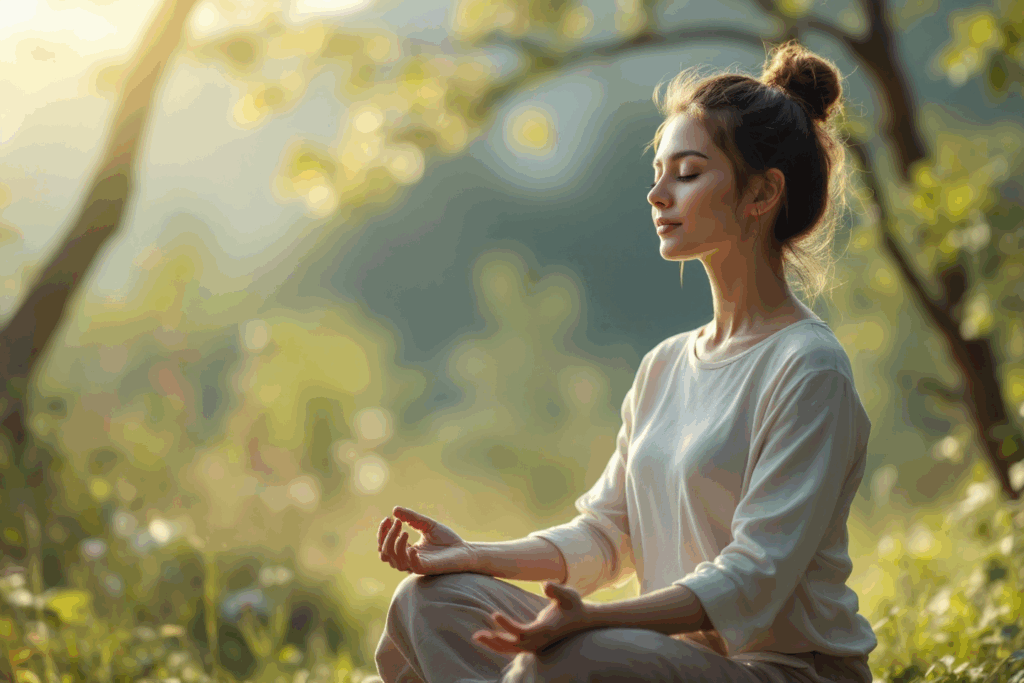




 Personal stories and case studies further illustrate mindfulness’s impact on mental health. Many people have reported that practicing mindfulness has helped them to make significant progress in reducing their symptoms of stress, anxiety, and depression while also increasing their overall happiness and satisfaction with life. The following accounts exhibit how practicing mindfulness can help individuals enhance their mental well-being.
Personal stories and case studies further illustrate mindfulness’s impact on mental health. Many people have reported that practicing mindfulness has helped them to make significant progress in reducing their symptoms of stress, anxiety, and depression while also increasing their overall happiness and satisfaction with life. The following accounts exhibit how practicing mindfulness can help individuals enhance their mental well-being.






 The integration of mindfulness into psychological therapy has revolutionized traditional approaches to mental health treatment. Mindfulness-Based Cognitive Therapy (MBCT) is a standout example, combining cognitive behavioral therapy (CBT) principles with mindfulness strategies. Developed to prevent the recurrence of depression, MBCT teaches individuals to disengage from automatic negative thought patterns that can trigger depressive episodes.
The integration of mindfulness into psychological therapy has revolutionized traditional approaches to mental health treatment. Mindfulness-Based Cognitive Therapy (MBCT) is a standout example, combining cognitive behavioral therapy (CBT) principles with mindfulness strategies. Developed to prevent the recurrence of depression, MBCT teaches individuals to disengage from automatic negative thought patterns that can trigger depressive episodes. Their sessions, finding that these practices help clients develop a more compassionate and non-judgmental awareness of their thoughts and feelings. Changing one’s perspective is an effective way for people to better manage their emotional reactions and minimize the impact of stressful thoughts and feelings on their mental well-being, which is crucial when it comes to handling stress. This shift in outlook is essential in coping with stress and can result in a more optimistic approach to life. By altering the way they view challenging situations, people can maintain better control over their emotions and avoid harmful thought patterns that can contribute to mental health issues. This shift in mindset is an effective way to manage stress and improve overall well-being.
Their sessions, finding that these practices help clients develop a more compassionate and non-judgmental awareness of their thoughts and feelings. Changing one’s perspective is an effective way for people to better manage their emotional reactions and minimize the impact of stressful thoughts and feelings on their mental well-being, which is crucial when it comes to handling stress. This shift in outlook is essential in coping with stress and can result in a more optimistic approach to life. By altering the way they view challenging situations, people can maintain better control over their emotions and avoid harmful thought patterns that can contribute to mental health issues. This shift in mindset is an effective way to manage stress and improve overall well-being. The effectiveness of mindfulness in therapy is supported by a growing body of research. Studies have shown that incorporating mindfulness techniques can result in a notable reduction in symptoms related to anxiety, depression, and PTSD. This makes mindfulness a valuable addition to more conventional therapeutic methods. Furthermore, mindfulness encourages a proactive approach to mental health, empowering individuals with tools they can use outside of therapy to maintain and improve their mental well-being.
The effectiveness of mindfulness in therapy is supported by a growing body of research. Studies have shown that incorporating mindfulness techniques can result in a notable reduction in symptoms related to anxiety, depression, and PTSD. This makes mindfulness a valuable addition to more conventional therapeutic methods. Furthermore, mindfulness encourages a proactive approach to mental health, empowering individuals with tools they can use outside of therapy to maintain and improve their mental well-being. By fostering an attitude of acceptance and present-moment awareness, mindfulness in therapy helps individuals confront their challenges with resilience and clarity. This approach not only aids in the healing process but also contributes to a more fulfilling and balanced life.
By fostering an attitude of acceptance and present-moment awareness, mindfulness in therapy helps individuals confront their challenges with resilience and clarity. This approach not only aids in the healing process but also contributes to a more fulfilling and balanced life.














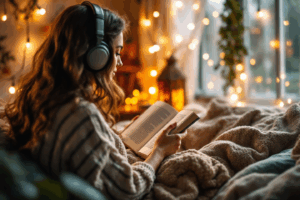
 Mindfulness offers a profound tool for navigating the complexities of modern life with grace and resilience. By anchoring us in the present moment, mindfulness cuts through the noise of daily distractions and unveils a space of clarity and calm within ourselves. This journey, though personal and unique for each individual, holds universal truths about the power of awareness, acceptance, and the capacity for transformation.
Mindfulness offers a profound tool for navigating the complexities of modern life with grace and resilience. By anchoring us in the present moment, mindfulness cuts through the noise of daily distractions and unveils a space of clarity and calm within ourselves. This journey, though personal and unique for each individual, holds universal truths about the power of awareness, acceptance, and the capacity for transformation. Now that we see How Mindfulness Can Transform Your Mental Health by looking at the benefits of mindfulness extend far beyond the moments of meditation; they weave through every aspect of our lives, enhancing our relationships, productivity, and overall satisfaction. As we move forward, the invitation is to continue exploring mindfulness with curiosity and openness, integrating its practices into our daily routines and moments of need.
Now that we see How Mindfulness Can Transform Your Mental Health by looking at the benefits of mindfulness extend far beyond the moments of meditation; they weave through every aspect of our lives, enhancing our relationships, productivity, and overall satisfaction. As we move forward, the invitation is to continue exploring mindfulness with curiosity and openness, integrating its practices into our daily routines and moments of need. The path of mindfulness is one of continuous discovery and growth. There may be challenges and setbacks, but each step taken is a step toward greater mental health and a fuller, more engaged life. Let mindfulness be your guide, a constant cowell-being in the pursuit of well-being and inner peace.
The path of mindfulness is one of continuous discovery and growth. There may be challenges and setbacks, but each step taken is a step toward greater mental health and a fuller, more engaged life. Let mindfulness be your guide, a constant cowell-being in the pursuit of well-being and inner peace.




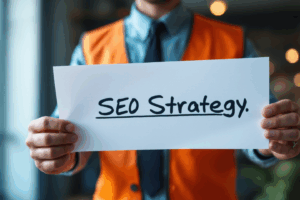
 Understanding and mastering these three areas can seem daunting, especially as search engines continually update their algorithms. However, the effort is well worth it. A solid SEO strategy can lead to sustained organic growth, reducing reliance on paid advertising and building a loyal audience base.
Understanding and mastering these three areas can seem daunting, especially as search engines continually update their algorithms. However, the effort is well worth it. A solid SEO strategy can lead to sustained organic growth, reducing reliance on paid advertising and building a loyal audience base. Imagine search engines as explorers navigating the vast territories of the internet. They use “crawlers” (also known as spiders or bots) to discover content, from web pages, images, and videos, to PDF files, across the web. These crawlers start from a known set of web addresses, follow links on those pages to other pages, and so on, constantly discovering new content. This process allows search engines to find new and updated content to add to their indexes.
Imagine search engines as explorers navigating the vast territories of the internet. They use “crawlers” (also known as spiders or bots) to discover content, from web pages, images, and videos, to PDF files, across the web. These crawlers start from a known set of web addresses, follow links on those pages to other pages, and so on, constantly discovering new content. This process allows search engines to find new and updated content to add to their indexes. After discovering content, search engines need to understand and organize it. This is where indexing comes in. Indexing involves analyzing the content of a page and storing it in a vast database. Think of it as a library catalog where every book (in this case, a web page) is categorized based on its content, use of keywords, and even images and videos. This organization makes it possible for the search engine to quickly retrieve relevant information during a search query.
After discovering content, search engines need to understand and organize it. This is where indexing comes in. Indexing involves analyzing the content of a page and storing it in a vast database. Think of it as a library catalog where every book (in this case, a web page) is categorized based on its content, use of keywords, and even images and videos. This organization makes it possible for the search engine to quickly retrieve relevant information during a search query. The final step in the search process is perhaps the most complex: ranking. When you type a question or keywords into a search bar, it sifts through its index to find the most relevant, high-quality results. This decision is based on hundreds of clues, like how well the content matches your search to the search query, the page’s authority, the user experience on the website, and many more. The goal is to provide users with the best possible answers to their questions at the top of the search results page.
The final step in the search process is perhaps the most complex: ranking. When you type a question or keywords into a search bar, it sifts through its index to find the most relevant, high-quality results. This decision is based on hundreds of clues, like how well the content matches your search to the search query, the page’s authority, the user experience on the website, and many more. The goal is to provide users with the best possible answers to their questions at the top of the search results page. Search engines are constantly evolving; they are constantly evolving. The rise of mobile internet usage, voice search, and artificial intelligence are just a few factors driving significant changes in how search engines operate. For SEO professionals, staying informed about these changes and adapting strategies accordingly is crucial for success.
Search engines are constantly evolving; they are constantly evolving. The rise of mobile internet usage, voice search, and artificial intelligence are just a few factors driving significant changes in how search engines operate. For SEO professionals, staying informed about these changes and adapting strategies accordingly is crucial for success. Diving into the nitty-gritty of On-Page SEO, we uncover the essence of making your website not just search engine friendly, but also valuable and engaging for your visitors. On-page SEO is your control panel for influencing how search engines and users perceive your site. Let’s explore the critical components that can significantly boost your rankings and user engagement.
Diving into the nitty-gritty of On-Page SEO, we uncover the essence of making your website not just search engine friendly, but also valuable and engaging for your visitors. On-page SEO is your control panel for influencing how search engines and users perceive your site. Let’s explore the critical components that can significantly boost your rankings and user engagement. Your content must meet the needs and answer the questions of your target audience. Decoding what your audience is looking for and crafting content that delivers exactly that is paramount.
Your content must meet the needs and answer the questions of your target audience. Decoding what your audience is looking for and crafting content that delivers exactly that is paramount. Content should be easily digestible, with a clear structure, short paragraphs, and headings that guide the reader through your narrative. There are many tools that can help ensure your writing is clear and engaging.
Content should be easily digestible, with a clear structure, short paragraphs, and headings that guide the reader through your narrative. There are many tools that can help ensure your writing is clear and engaging. While stuffing your content with keywords is a bygone tactic, strategically placing relevant keywords in your content, especially in the first 100 words, helps search engines understand what your page is about.
While stuffing your content with keywords is a bygone tactic, strategically placing relevant keywords in your content, especially in the first 100 words, helps search engines understand what your page is about. The headline and snippet users see first: Title tags and meta descriptions interaction people have with your content on a search engine results page (SERP). These elements must be compelling and include main keywords to boost visibility.
The headline and snippet users see first: Title tags and meta descriptions interaction people have with your content on a search engine results page (SERP). These elements must be compelling and include main keywords to boost visibility. Internal linking is an authoritative tool for boosting page authority and helping visitors navigate your site. By linking to relevant, high-quality content within your site, you’re signaling to search engines the hierarchy and importance of your pages. Use descriptive anchor text that gives a clear indication of the linked content’s topic.
Internal linking is an authoritative tool for boosting page authority and helping visitors navigate your site. By linking to relevant, high-quality content within your site, you’re signaling to search engines the hierarchy and importance of your pages. Use descriptive anchor text that gives a clear indication of the linked content’s topic. In today’s fast-paced digital environment, site speed is more important than ever. Google has explicitly mentioned speed as a ranking factor for both desktop and mobile searches. A slow-loading site can increase bounce rates, remember, lightning-fast loading speeds are crucial to prevent visitors from bouncing due to impatience. Tools like Google’s PageSpeed Insights can help identify issues and offer solutions to improve your site’s loading times. Optimizations can include compressing images, leveraging browser caching, and minimizing CSS and JavaScript files.
In today’s fast-paced digital environment, site speed is more important than ever. Google has explicitly mentioned speed as a ranking factor for both desktop and mobile searches. A slow-loading site can increase bounce rates, remember, lightning-fast loading speeds are crucial to prevent visitors from bouncing due to impatience. Tools like Google’s PageSpeed Insights can help identify issues and offer solutions to improve your site’s loading times. Optimizations can include compressing images, leveraging browser caching, and minimizing CSS and JavaScript files. Considering the rise of mobile internet users via mobile devices, mobile-friendliness has become a critical ranking factor. A mobile-friendly, responsive design ensures your site provides a flawless experience across all screen sizes, from desktops to mobile phones.
Considering the rise of mobile internet users via mobile devices, mobile-friendliness has become a critical ranking factor. A mobile-friendly, responsive design ensures your site provides a flawless experience across all screen sizes, from desktops to mobile phones. SSL keeps your website communication secure, like a secret handshake between you and your visitors, safeguarding personal information from being intercepted. Google has confirmed that using SSL (indicated by HTTPS in your site’s URL) is a ranking signal. Beyond SEO, SSL certification builds trust with your visitors, showing that you value their security. Transitioning your site to HTTPS is a straightforward process that can significantly impact your site’s credibility and SEO.
SSL keeps your website communication secure, like a secret handshake between you and your visitors, safeguarding personal information from being intercepted. Google has confirmed that using SSL (indicated by HTTPS in your site’s URL) is a ranking signal. Beyond SEO, SSL certification builds trust with your visitors, showing that you value their security. Transitioning your site to HTTPS is a straightforward process that can significantly impact your site’s credibility and SEO.
 Voice search has been gaining momentum, thanks to the proliferation of voice-activated assistants like Amazon’s Alexa, Apple’s Siri, and Google Assistant. This trend is reshaping keyword strategies, as voice searches tend to be more conversational and longer than text-based queries. People speak naturally to their devices, asking questions as they would to a human. This shift necessitates a move towards optimizing for long-tail keywords and question-based queries, ensuring content can effectively answer the types of questions people are asking aloud. The focus is on semantic search, understanding the intent behind queries, and providing precise, conversational answers that voice search devices can relay back to users.
Voice search has been gaining momentum, thanks to the proliferation of voice-activated assistants like Amazon’s Alexa, Apple’s Siri, and Google Assistant. This trend is reshaping keyword strategies, as voice searches tend to be more conversational and longer than text-based queries. People speak naturally to their devices, asking questions as they would to a human. This shift necessitates a move towards optimizing for long-tail keywords and question-based queries, ensuring content can effectively answer the types of questions people are asking aloud. The focus is on semantic search, understanding the intent behind queries, and providing precise, conversational answers that voice search devices can relay back to users. For businesses, especially those that incorporate a physical presence, local SEO has become indispensable. In optimizing for local search, involves making sure your business appears prominently in local search results and on platforms like Google My Business. It’s about being visible when a user searches for services or products “near me.” Local SEO strategies include optimizing for local keywords, securing listings in local business directories, and managing online reviews and ratings. As the world becomes more connected yet more localized in focus, local SEO helps businesses attract targeted, high-intent traffic, offering opportunities to convert online searches into offline sales.
For businesses, especially those that incorporate a physical presence, local SEO has become indispensable. In optimizing for local search, involves making sure your business appears prominently in local search results and on platforms like Google My Business. It’s about being visible when a user searches for services or products “near me.” Local SEO strategies include optimizing for local keywords, securing listings in local business directories, and managing online reviews and ratings. As the world becomes more connected yet more localized in focus, local SEO helps businesses attract targeted, high-intent traffic, offering opportunities to convert online searches into offline sales.
 Now, let’s talk about backlinks, or also called inbound links. Backlinks are those links from other websites that lead back to your site. They are among the cornerstone elements of SEO, acting as votes of confidence from one site to another. The logic is straightforward: if multiple reputable sites link back to your content, the search engines will interpret this as a signal that your content is valuable, credible, and authoritative, which can significantly boost your rankings. However, always keep in mind that not every backlink is made equal. Factors like the quality of the linking site, the relevance of the content between the two sites, and the way the link is structured (e.g., using relevant anchor text) play crucial roles in the value of a backlink.
Now, let’s talk about backlinks, or also called inbound links. Backlinks are those links from other websites that lead back to your site. They are among the cornerstone elements of SEO, acting as votes of confidence from one site to another. The logic is straightforward: if multiple reputable sites link back to your content, the search engines will interpret this as a signal that your content is valuable, credible, and authoritative, which can significantly boost your rankings. However, always keep in mind that not every backlink is made equal. Factors like the quality of the linking site, the relevance of the content between the two sites, and the way the link is structured (e.g., using relevant anchor text) play crucial roles in the value of a backlink. Writing articles for reputable sites in your industry not only positions you as an authority but also allows you to secure backlinks to your site.
Writing articles for reputable sites in your industry not only positions you as an authority but also allows you to secure backlinks to your site. Infographics, comprehensive guides, and original research are types of content that naturally encourage sharing and linking.
Infographics, comprehensive guides, and original research are types of content that naturally encourage sharing and linking. Identify broken links on external websites and offer your content as a replacement, providing value to the site owner and securing a backlink.
Identify broken links on external websites and offer your content as a replacement, providing value to the site owner and securing a backlink. Sometimes, the direct approach works best. Reach out to websites that mention your brand or could benefit from your resources and ask for a link.
Sometimes, the direct approach works best. Reach out to websites that mention your brand or could benefit from your resources and ask for a link.
 The landscape of SEO is ever-evolving, driven by technological advancements and changing user behaviors. The rise of voice search, the importance of local SEO, and the promising future of Artificial Intelligence and machine learning are just the tip of the iceberg. As SEO professionals, embracing these trends and continuously adapting our strategies is crucial for staying ahead. The future of SEO is not just about optimizing for search engines but about creating valuable, relevant, and accessible content that meets the evolving needs and expectations of users. By keeping our fingers on the pulse of these trends and being willing to innovate, we can go through the future of SEO with confidence and success.
The landscape of SEO is ever-evolving, driven by technological advancements and changing user behaviors. The rise of voice search, the importance of local SEO, and the promising future of Artificial Intelligence and machine learning are just the tip of the iceberg. As SEO professionals, embracing these trends and continuously adapting our strategies is crucial for staying ahead. The future of SEO is not just about optimizing for search engines but about creating valuable, relevant, and accessible content that meets the evolving needs and expectations of users. By keeping our fingers on the pulse of these trends and being willing to innovate, we can go through the future of SEO with confidence and success. This deep dive into the future of SEO and its trends underscores the importance of adaptability and forward-thinking in maintaining and enhancing online visibility. As we wrap up this exploration, remember that the main step to success in SEO is not just in responding to the present but in anticipating the future.
This deep dive into the future of SEO and its trends underscores the importance of adaptability and forward-thinking in maintaining and enhancing online visibility. As we wrap up this exploration, remember that the main step to success in SEO is not just in responding to the present but in anticipating the future. Exploration into the vast world of SEO, it’s clear that a balanced approach, incorporating both on-page and off-page strategies, alongside staying abreast of technical SEO developments and future trends, is key to achieving and maintaining search engine success.
Exploration into the vast world of SEO, it’s clear that a balanced approach, incorporating both on-page and off-page strategies, alongside staying abreast of technical SEO developments and future trends, is key to achieving and maintaining search engine success.





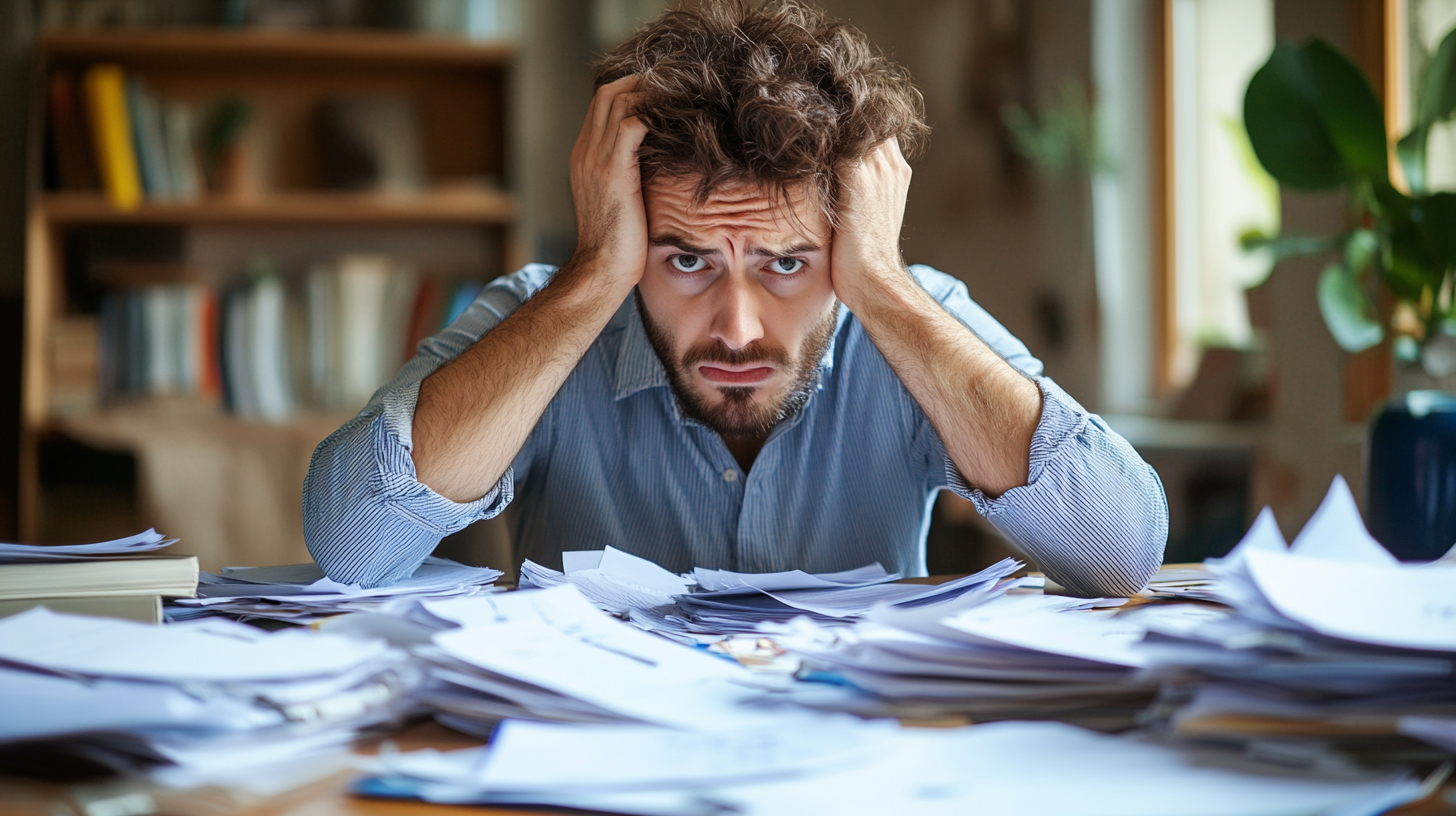

 In today’s relentlessly fast-paced world, the line between pushing oneself for success and falling into burnout has become dangerously thin. Burnout, characterized by emotional, physical, and mental fatigue resulting from intense and extended stress, has become a silent epidemic among individuals and workers trying to keep up with the increasing pressures of work and personal life. It’s a condition that sneaks up quietly, often mistaken for mere tiredness or a temporary bout of stress. Yet, its impact can be profound and long-lasting, affecting health, happiness, and job performance.
In today’s relentlessly fast-paced world, the line between pushing oneself for success and falling into burnout has become dangerously thin. Burnout, characterized by emotional, physical, and mental fatigue resulting from intense and extended stress, has become a silent epidemic among individuals and workers trying to keep up with the increasing pressures of work and personal life. It’s a condition that sneaks up quietly, often mistaken for mere tiredness or a temporary bout of stress. Yet, its impact can be profound and long-lasting, affecting health, happiness, and job performance. Understanding and recognizing the signs of burnout is the first critical step toward recovery. However, identifying burnout can be tricky, especially when its symptoms overlap with everyday stress. This makes it all the more essential to distinguish between being just stressed and being burnt out. Stress involves excessive demands: too many pressures that exhaust you physically and mentally. Yet, those under stress often believe that managing everything will improve their situation. In contrast, burnout relates to a deficiency: feeling empty, lacking motivation, and no longer caring. Those suffering from burnout typically see no hopeful prospects for improvement in their circumstances.
Understanding and recognizing the signs of burnout is the first critical step toward recovery. However, identifying burnout can be tricky, especially when its symptoms overlap with everyday stress. This makes it all the more essential to distinguish between being just stressed and being burnt out. Stress involves excessive demands: too many pressures that exhaust you physically and mentally. Yet, those under stress often believe that managing everything will improve their situation. In contrast, burnout relates to a deficiency: feeling empty, lacking motivation, and no longer caring. Those suffering from burnout typically see no hopeful prospects for improvement in their circumstances. You might be on the burnout spectrum if you’re feeling constantly drained, detached, and disillusioned. The good news is that burnout is manageable and reversible. By using both self-help techniques and professional assistance, you can restore your balance and find renewed pleasure in your work and life. This guide delves into the ten signs that signify you might be experiencing burnout and offers practical, actionable strategies to embark on recovery. By acknowledging the problem and taking decisive steps to address it, you can rebuild your reserves of energy and enthusiasm and find a more sustainable way of living and working.
You might be on the burnout spectrum if you’re feeling constantly drained, detached, and disillusioned. The good news is that burnout is manageable and reversible. By using both self-help techniques and professional assistance, you can restore your balance and find renewed pleasure in your work and life. This guide delves into the ten signs that signify you might be experiencing burnout and offers practical, actionable strategies to embark on recovery. By acknowledging the problem and taking decisive steps to address it, you can rebuild your reserves of energy and enthusiasm and find a more sustainable way of living and working.



















 As we navigate the complexities of modern life, the shadow of burnout looms large, threatening to undermine our health, happiness, and professional success. Recognizing the signs of burnout is the first critical step toward reclaiming your well-being and vitality. The journey from burnout to recovery is personal and can require a multifaceted approach, incorporating changes to your work habits, lifestyle, and mindset.
As we navigate the complexities of modern life, the shadow of burnout looms large, threatening to undermine our health, happiness, and professional success. Recognizing the signs of burnout is the first critical step toward reclaiming your well-being and vitality. The journey from burnout to recovery is personal and can require a multifaceted approach, incorporating changes to your work habits, lifestyle, and mindset. Beyond individual efforts, there’s a growing recognition of the need for systemic changes to address the root causes of burnout. Employers play a crucial role in creating work environments that promote work-life balance, support mental health, and recognize the importance of rest and recovery. Creating a work environment that emphasizes both physical and mental health can stop burnout before it starts and keep everyone feeling their best.
Beyond individual efforts, there’s a growing recognition of the need for systemic changes to address the root causes of burnout. Employers play a crucial role in creating work environments that promote work-life balance, support mental health, and recognize the importance of rest and recovery. Creating a work environment that emphasizes both physical and mental health can stop burnout before it starts and keep everyone feeling their best. Burnout is a signal that something in your life is out of alignment. It’s an invitation to pause, reflect, and make meaningful changes that support your health and happiness. By acknowledging the signs of burnout and taking proactive steps toward recovery, you can navigate back to a life of balance, fulfillment, and joy. Remember, you’re not alone in this journey. With the right support and strategies, recovery is possible and can be a transformative experience that leads to a more satisfying and sustainable way of living.
Burnout is a signal that something in your life is out of alignment. It’s an invitation to pause, reflect, and make meaningful changes that support your health and happiness. By acknowledging the signs of burnout and taking proactive steps toward recovery, you can navigate back to a life of balance, fulfillment, and joy. Remember, you’re not alone in this journey. With the right support and strategies, recovery is possible and can be a transformative experience that leads to a more satisfying and sustainable way of living.




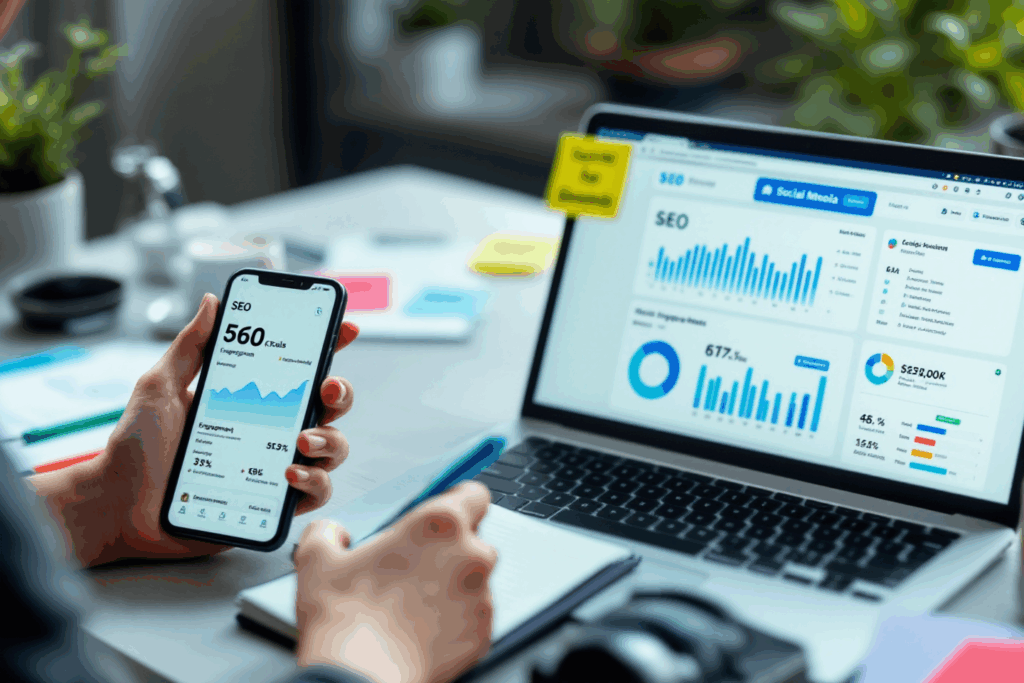




 This guide aims to shed light on the multifaceted nature of anxiety, providing a comprehensive exploration of strategies and tools to manage it effectively. It delves into both psychological and practical approaches, offering a balanced perspective on anxiety management.
This guide aims to shed light on the multifaceted nature of anxiety, providing a comprehensive exploration of strategies and tools to manage it effectively. It delves into both psychological and practical approaches, offering a balanced perspective on anxiety management.










 The right strategies and tools can make a significant difference in this journey. Psychological approaches like cognitive-behavioral therapy can aid in understanding and altering thought patterns that contribute to anxiety. Physical strategies, including regular exercise and a healthy diet, can reduce the physical symptoms of anxiety. Lifestyle strategies, such as mindfulness and meditation, can help you stay present and focused, reducing anxiety’s impact on your day-to-day life.
The right strategies and tools can make a significant difference in this journey. Psychological approaches like cognitive-behavioral therapy can aid in understanding and altering thought patterns that contribute to anxiety. Physical strategies, including regular exercise and a healthy diet, can reduce the physical symptoms of anxiety. Lifestyle strategies, such as mindfulness and meditation, can help you stay present and focused, reducing anxiety’s impact on your day-to-day life. Keep in mind that seeking professional assistance when necessary is not an indication of weakness, but a demonstration of strength. It requires bravery to ask for help. Therapists and counselors are trained experts who can offer you more strategies and tools to cope with your anxiety.
Keep in mind that seeking professional assistance when necessary is not an indication of weakness, but a demonstration of strength. It requires bravery to ask for help. Therapists and counselors are trained experts who can offer you more strategies and tools to cope with your anxiety.


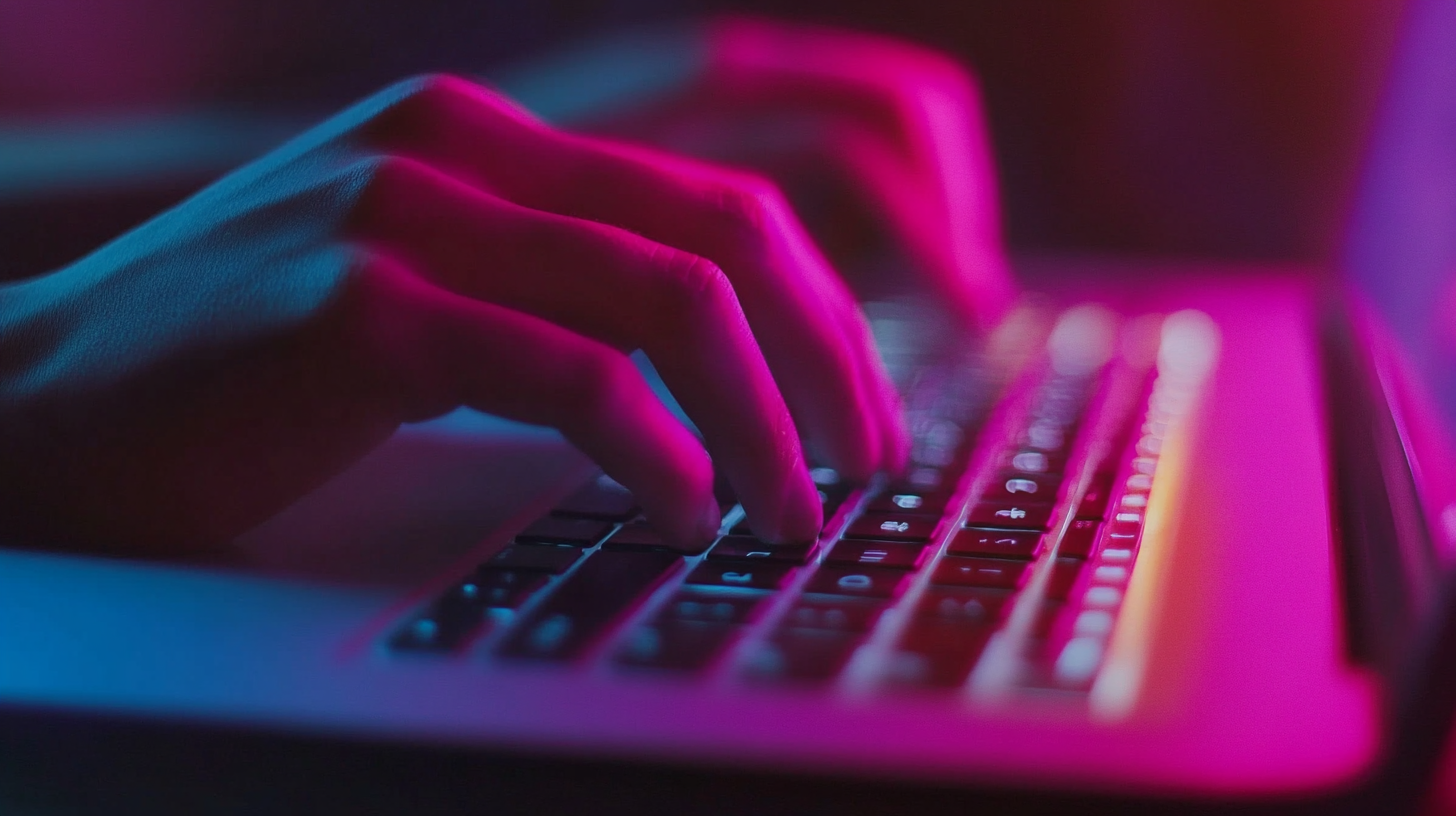

 In this fast-paced business world, communication is not just about exchanging information; it’s about doing so with clarity, precision, and professionalism. English, being the lingua franca of the global business community, serves as a critical tool in this process. However, how effective this tool greatly depends on one’s mastery of business English grammar. It’s not merely about avoiding common errors; it’s about understanding the subtleties and nuances that make your communication stand out in a sea of mundane correspondences. Our lesson today focuses on the Basics of Business English Grammar.
In this fast-paced business world, communication is not just about exchanging information; it’s about doing so with clarity, precision, and professionalism. English, being the lingua franca of the global business community, serves as a critical tool in this process. However, how effective this tool greatly depends on one’s mastery of business English grammar. It’s not merely about avoiding common errors; it’s about understanding the subtleties and nuances that make your communication stand out in a sea of mundane correspondences. Our lesson today focuses on the Basics of Business English Grammar.  As we navigate these topics, we aim to give you with practical insights and tips that you can apply to your writing and speaking in the professional realm. Whether you’re drafting an important email, preparing a business proposal, or communicating with colleagues and clients, the ideas outlined in this article will help ensure your grammar is not just correct, but also impactful and effective. Join us as we explore the cornerstone of professional communication: the basics of business English grammar.
As we navigate these topics, we aim to give you with practical insights and tips that you can apply to your writing and speaking in the professional realm. Whether you’re drafting an important email, preparing a business proposal, or communicating with colleagues and clients, the ideas outlined in this article will help ensure your grammar is not just correct, but also impactful and effective. Join us as we explore the cornerstone of professional communication: the basics of business English grammar. In the realm of professional communication, grammar is more than a set of rules governing the use of language; it is a key element in conveying professionalism and maintaining the integrity of a business’s reputation. Understanding and applying the principles of grammar can elevate the quality of interaction within and outside an organization, shaping perceptions and influencing outcomes in the business world.
In the realm of professional communication, grammar is more than a set of rules governing the use of language; it is a key element in conveying professionalism and maintaining the integrity of a business’s reputation. Understanding and applying the principles of grammar can elevate the quality of interaction within and outside an organization, shaping perceptions and influencing outcomes in the business world. Professionalism in business communication is not just about the content but also about the presentation of that content. Grammar plays an important role in ensuring that the message is clear, precise, and taken seriously. It reflects the level of attention to detail and care put into the communication, thereby influencing the receiver’s perception of the sender’s competence and reliability. In essence, proper grammar is akin to dressing appropriately for a business meeting; it sends a message of respect for the recipient and seriousness about the business at hand.
Professionalism in business communication is not just about the content but also about the presentation of that content. Grammar plays an important role in ensuring that the message is clear, precise, and taken seriously. It reflects the level of attention to detail and care put into the communication, thereby influencing the receiver’s perception of the sender’s competence and reliability. In essence, proper grammar is akin to dressing appropriately for a business meeting; it sends a message of respect for the recipient and seriousness about the business at hand.
 The importance of grammar in business communication is further underscored by numerous examples where correct grammar has led to successful outcomes. Take, for instance, the case of a small tech startup pitching to potential investors. By using clear, concise, and grammatically correct language in their pitch documents and presentations, they were able to convey their business idea effectively, securing the funding necessary for growth. Similarly, a marketing team’s well-crafted, error-free promotional material can lead to higher engagement and persuade potential customers more effectively than a competitor’s content that lacks grammatical precision.
The importance of grammar in business communication is further underscored by numerous examples where correct grammar has led to successful outcomes. Take, for instance, the case of a small tech startup pitching to potential investors. By using clear, concise, and grammatically correct language in their pitch documents and presentations, they were able to convey their business idea effectively, securing the funding necessary for growth. Similarly, a marketing team’s well-crafted, error-free promotional material can lead to higher engagement and persuade potential customers more effectively than a competitor’s content that lacks grammatical precision.
 On a larger scale, multinational corporations engaging in cross-border negotiations use precise grammar to ensure that contractual agreements are unambiguous and reflective of mutual understanding. This precision mitigates the risk of costly legal disputes and fosters long-term business relationships.
On a larger scale, multinational corporations engaging in cross-border negotiations use precise grammar to ensure that contractual agreements are unambiguous and reflective of mutual understanding. This precision mitigates the risk of costly legal disputes and fosters long-term business relationships. In conclusion, the importance of grammar in professional communication cannot be overstated. It is a fundamental component of conveying professionalism, safeguarding a business’s reputation, and achieving successful communication outcomes. By prioritizing grammatical accuracy, businesses can enhance the clarity and effectiveness of their communication, laying a strong foundation for success in the competitive world of business.
In conclusion, the importance of grammar in professional communication cannot be overstated. It is a fundamental component of conveying professionalism, safeguarding a business’s reputation, and achieving successful communication outcomes. By prioritizing grammatical accuracy, businesses can enhance the clarity and effectiveness of their communication, laying a strong foundation for success in the competitive world of business.





 By familiarizing yourself with these common mistakes and employing strategies to avoid them, you can enhance the clarity and professionalism of your business writing. Bear in mind that an effective communication is key to success in any professional setting, and mastering the basics of grammar is a crucial part of that process.
By familiarizing yourself with these common mistakes and employing strategies to avoid them, you can enhance the clarity and professionalism of your business writing. Bear in mind that an effective communication is key to success in any professional setting, and mastering the basics of grammar is a crucial part of that process. In the realm of business communication, the structure of each sentence plays a pivotal role in ensuring your message is not only received but also understood exactly as intended. A well-structured sentence can convey your message with clarity and precision, making your communication more effective and impactful. Here’s why sentence structure matters and how you can craft clear and concise sentences in your business writing.
In the realm of business communication, the structure of each sentence plays a pivotal role in ensuring your message is not only received but also understood exactly as intended. A well-structured sentence can convey your message with clarity and precision, making your communication more effective and impactful. Here’s why sentence structure matters and how you can craft clear and concise sentences in your business writing.


 To choice between active and passive voice is a fundamental aspect of sentence construction that significantly influences the clarity, impact, and tone of business communication. Understanding when and how to use each can improve your writing and make it more engagiging as well as effective as a whole.
To choice between active and passive voice is a fundamental aspect of sentence construction that significantly influences the clarity, impact, and tone of business communication. Understanding when and how to use each can improve your writing and make it more engagiging as well as effective as a whole.


 In conclusion, mastering the basics of business English grammar is not just about adhering to the rules; it’s about leveraging them to enhance your professional communication. From understanding the importance of grammar in conveying professionalism to recognizing common errors and constructing clear, concise sentences, each element plays a crucial role in ensuring your message is delivered effectively. The strategic use of active and passive voice further refines your ability to tailor your message for maximum impact. When you apply these principles, you can elevate your writing, making it more engaging, persuasive, and professional. This not only benefits your personal communication skills but also positively affects the overall image and success of your organization. Always remember that effective communication is a continuous journey of learning and improvement. The commitment to mastering Basics of Business English Grammar is a step towards ensuring your ideas are not just heard, but understood and respected in the professional world.
In conclusion, mastering the basics of business English grammar is not just about adhering to the rules; it’s about leveraging them to enhance your professional communication. From understanding the importance of grammar in conveying professionalism to recognizing common errors and constructing clear, concise sentences, each element plays a crucial role in ensuring your message is delivered effectively. The strategic use of active and passive voice further refines your ability to tailor your message for maximum impact. When you apply these principles, you can elevate your writing, making it more engaging, persuasive, and professional. This not only benefits your personal communication skills but also positively affects the overall image and success of your organization. Always remember that effective communication is a continuous journey of learning and improvement. The commitment to mastering Basics of Business English Grammar is a step towards ensuring your ideas are not just heard, but understood and respected in the professional world.



 In the vast landscape of English writing, where every punctuation mark and every word choice matters, there lies a tiny symbol that often determines the clarity of a sentence: the apostrophe. This seemingly insignificant mark carries the weight of meaning on its slender shoulders, distinguishing possession from contraction, days of the week from decades of history. Yet, amidst its various uses, the apostrophe presents a peculiar challenge perplexing writers for generations: the distinction between “its” and “it’s.” This dilemma, often called the “Apostrophe Catastrophe,” is not just a common stumbling block for English learners but also native speakers and seasoned writers alike.
In the vast landscape of English writing, where every punctuation mark and every word choice matters, there lies a tiny symbol that often determines the clarity of a sentence: the apostrophe. This seemingly insignificant mark carries the weight of meaning on its slender shoulders, distinguishing possession from contraction, days of the week from decades of history. Yet, amidst its various uses, the apostrophe presents a peculiar challenge perplexing writers for generations: the distinction between “its” and “it’s.” This dilemma, often called the “Apostrophe Catastrophe,” is not just a common stumbling block for English learners but also native speakers and seasoned writers alike. The confusion between “its” and “it’s” might seem trivial to the untrained eye. Still, it’s a litmus test for precision in language that can significantly impact the readability and professionalism of a text. “Its,” the possessive form of “it,” and “it’s,” a contraction for “it is” or “it has,” occupy very different roles in the fabric of English grammar. Yet, they are frequently misused, leading to misunderstandings or the dilution of the intended message.
The confusion between “its” and “it’s” might seem trivial to the untrained eye. Still, it’s a litmus test for precision in language that can significantly impact the readability and professionalism of a text. “Its,” the possessive form of “it,” and “it’s,” a contraction for “it is” or “it has,” occupy very different roles in the fabric of English grammar. Yet, they are frequently misused, leading to misunderstandings or the dilution of the intended message. In this guide, we embark on a journey to untangle the “Apostrophe Catastrophe,” offering a beacon of clarity for those navigating the nuanced waters of English punctuation. By dissecting the roles, rules, and applications of “its” and “it’s,” this blog aims to illuminate the correct usage of these terms and reinforce the importance of attention to detail in written communication. Through examples, explanations, and tips, we will master the distinction between “its” and “it’s,” transforming this common source of error into a testament to our linguistic precision and prowess.
In this guide, we embark on a journey to untangle the “Apostrophe Catastrophe,” offering a beacon of clarity for those navigating the nuanced waters of English punctuation. By dissecting the roles, rules, and applications of “its” and “it’s,” this blog aims to illuminate the correct usage of these terms and reinforce the importance of attention to detail in written communication. Through examples, explanations, and tips, we will master the distinction between “its” and “it’s,” transforming this common source of error into a testament to our linguistic precision and prowess.


 As mentioned, if you can replace “it’s” with “it is” or “it has” and the sentence still makes sense, then using “it’s” is appropriate.
As mentioned, if you can replace “it’s” with “it is” or “it has” and the sentence still makes sense, then using “it’s” is appropriate. Remember that “it’s” always signifies a contraction. If you intend to convey possession or attribute qualities to “it,” “it’s” is not the correct choice.
Remember that “it’s” always signifies a contraction. If you intend to convey possession or attribute qualities to “it,” “it’s” is not the correct choice. Sometimes, reading your sentence aloud with “it is” or “it has” in place of “it’s” can clarify whether the contraction fits the context.
Sometimes, reading your sentence aloud with “it is” or “it has” in place of “it’s” can clarify whether the contraction fits the context. Despite its simplicity, “it’s” often ends up misapplied in instances where possession is intended, leading to errors that can detract from credibility and clarity. Avoiding this mistake requires constant vigilance and practice, always keeping the function of the contraction at the forefront of your mind.
Despite its simplicity, “it’s” often ends up misapplied in instances where possession is intended, leading to errors that can detract from credibility and clarity. Avoiding this mistake requires constant vigilance and practice, always keeping the function of the contraction at the forefront of your mind. Embracing “it’s” in your writing entails recognizing and applying its role as a contraction effectively. While it’s tempting to overcorrect and shy away from using “it’s” due to fear of misuse, remember that contractions play a vital role in creating a natural, approachable tone in writing. Mastery of “it’s” not only showcases grammatical competence but also enhances the readability and engagement of your text.
Embracing “it’s” in your writing entails recognizing and applying its role as a contraction effectively. While it’s tempting to overcorrect and shy away from using “it’s” due to fear of misuse, remember that contractions play a vital role in creating a natural, approachable tone in writing. Mastery of “it’s” not only showcases grammatical competence but also enhances the readability and engagement of your text.


 Before using “its,” consider whether you are indicating possession. If the sentence attributes ownership or a belonging relationship to “it,” “its” is likely the correct choice.
Before using “its,” consider whether you are indicating possession. If the sentence attributes ownership or a belonging relationship to “it,” “its” is likely the correct choice. Remember that “its,” as a possessive pronoun, never includes an apostrophe. This rule sets it apart from “it’s” and aligns it with other possessive pronouns.
Remember that “its,” as a possessive pronoun, never includes an apostrophe. This rule sets it apart from “it’s” and aligns it with other possessive pronouns. If unsure about using “its,” read the sentence with the phrase “belonging to it.” If the sentence makes sense, then “its” is the correct form to use.
If unsure about using “its,” read the sentence with the phrase “belonging to it.” If the sentence makes sense, then “its” is the correct form to use.
 The journey through the nuanced terrain of “its” and “it’s” is fraught with potential for error. These common mistakes, however, are not mere stumbling blocks but opportunities for learning and refinement. Recognizing and understanding these errors are crucial steps toward ensuring precision in your use of English. Here, we’ll explore typical pitfalls involving “its” and “it’s” and offer strategies to navigate around them, enhancing your writing with every word.
The journey through the nuanced terrain of “its” and “it’s” is fraught with potential for error. These common mistakes, however, are not mere stumbling blocks but opportunities for learning and refinement. Recognizing and understanding these errors are crucial steps toward ensuring precision in your use of English. Here, we’ll explore typical pitfalls involving “its” and “it’s” and offer strategies to navigate around them, enhancing your writing with every word.


 The quest to conquer the “Apostrophe Catastrophe” may seem daunting at first, but by mastering the intricacies of “its” vs. “it’s,” you’ve taken a significant step towards achieving grammatical prowess. Remember, the key lies in understanding the fundamental distinction between possessive pronouns and contractions. With this knowledge and by applying the provided tips and tricks, you can transform these once-dreaded terms into powerful tools for clear and impactful communication. So, the next time you encounter “its” or “it’s,” pause for a moment, consider its role in the sentence, and confidently choose the correct form, taking your writing to a whole new level of sophistication and accuracy.
The quest to conquer the “Apostrophe Catastrophe” may seem daunting at first, but by mastering the intricacies of “its” vs. “it’s,” you’ve taken a significant step towards achieving grammatical prowess. Remember, the key lies in understanding the fundamental distinction between possessive pronouns and contractions. With this knowledge and by applying the provided tips and tricks, you can transform these once-dreaded terms into powerful tools for clear and impactful communication. So, the next time you encounter “its” or “it’s,” pause for a moment, consider its role in the sentence, and confidently choose the correct form, taking your writing to a whole new level of sophistication and accuracy. Bonus Tip:
Bonus Tip:  Congratulations! You have begun a journey to master the “Apostrophe Catastrophe.” With regular practice and close attention to detail, you can excel at distinguishing “its” from “it’s” and significantly improve your writing.
Congratulations! You have begun a journey to master the “Apostrophe Catastrophe.” With regular practice and close attention to detail, you can excel at distinguishing “its” from “it’s” and significantly improve your writing.


 In the realm of global business, the power of words cannot be underestimated. English, serving as the global lingua franca, plays a pivotal role in bridging diverse cultures and economies. However, the effectiveness of these connections hinges on the clarity and precision of the communication involved. Herein lies the critical importance of English grammar. Proper grammar enhances the clarity, credibility, and persuasiveness of business communication. It ensures that messages are not only received but understood exactly as intended, eliminating the risk of costly misunderstandings and misinterpretations. In contrast, grammatical errors can undermine professionalism, reduce the impact of messages, and in some cases, lead to significant financial losses.
In the realm of global business, the power of words cannot be underestimated. English, serving as the global lingua franca, plays a pivotal role in bridging diverse cultures and economies. However, the effectiveness of these connections hinges on the clarity and precision of the communication involved. Herein lies the critical importance of English grammar. Proper grammar enhances the clarity, credibility, and persuasiveness of business communication. It ensures that messages are not only received but understood exactly as intended, eliminating the risk of costly misunderstandings and misinterpretations. In contrast, grammatical errors can undermine professionalism, reduce the impact of messages, and in some cases, lead to significant financial losses. Moreover, in an era where digital communication dominates, every email, report, proposal, and presentation becomes a mirror of one’s professionalism and attention to detail. Grammar mistakes in such documents can detract from the intended message and the professional image of both the individual and the organization they represent. Thus, mastering English grammar is not merely an academic exercise but a fundamental business skill that enhances communication efficiency, fosters trust, and builds confidence among clients, partners, and colleagues.
Moreover, in an era where digital communication dominates, every email, report, proposal, and presentation becomes a mirror of one’s professionalism and attention to detail. Grammar mistakes in such documents can detract from the intended message and the professional image of both the individual and the organization they represent. Thus, mastering English grammar is not merely an academic exercise but a fundamental business skill that enhances communication efficiency, fosters trust, and builds confidence among clients, partners, and colleagues. This article is structured to navigate through the intricacies of English grammar in a business context systematically. It begins with “Understanding the Basics,” where we explore the foundational grammatical elements crucial for clear communication. We then move to “Practical Applications in Business,” demonstrating how these principles apply to everyday business scenarios. “Common Grammar Mistakes in Business English” highlights errors to avoid, while “Grammar Tips for Non-Native English Speakers” provides tailored advice for the global workforce. Finally, “Leveraging Technology to Improve Your Business English” introduces tools and resources for ongoing improvement. This complete approach ensures that readers not only learn the rules but also understand how to apply them effectively in their professional lives, thereby achieving greater success in the business world.
This article is structured to navigate through the intricacies of English grammar in a business context systematically. It begins with “Understanding the Basics,” where we explore the foundational grammatical elements crucial for clear communication. We then move to “Practical Applications in Business,” demonstrating how these principles apply to everyday business scenarios. “Common Grammar Mistakes in Business English” highlights errors to avoid, while “Grammar Tips for Non-Native English Speakers” provides tailored advice for the global workforce. Finally, “Leveraging Technology to Improve Your Business English” introduces tools and resources for ongoing improvement. This complete approach ensures that readers not only learn the rules but also understand how to apply them effectively in their professional lives, thereby achieving greater success in the business world.


 Navigating the nuances of business English can be a minefield, with certain grammatical errors more prevalent—and potentially more damaging—than others. To recognize and avoid these common mistakes can greatly enhance the clarity and professionalism of business communication.
Navigating the nuances of business English can be a minefield, with certain grammatical errors more prevalent—and potentially more damaging—than others. To recognize and avoid these common mistakes can greatly enhance the clarity and professionalism of business communication. Being aware and to know how to avoid of these common errors can significantly improve the quality of business communication. By paying careful attention to modifier placement, subject-verb agreement, and the judicious use of passive voice, professionals can ensure their writing is not only grammatically correct but also clear, concise, and impactful.
Being aware and to know how to avoid of these common errors can significantly improve the quality of business communication. By paying careful attention to modifier placement, subject-verb agreement, and the judicious use of passive voice, professionals can ensure their writing is not only grammatically correct but also clear, concise, and impactful. For non-native English speakers, mastering the grammar of business English is crucial for effective, professional communication. This mastery goes beyond basic grammatical correctness; it involves understanding the nuances that make communication clear and culturally appropriate.
For non-native English speakers, mastering the grammar of business English is crucial for effective, professional communication. This mastery goes beyond basic grammatical correctness; it involves understanding the nuances that make communication clear and culturally appropriate. For non-native speakers, becoming proficient in business English grammar not only facilitates clearer communication but also opens doors to greater professional opportunities. By focusing on essential grammar rules, understanding cultural nuances, and leveraging available resources, non-native speakers can enhance their professionalism and effectiveness in the global business arena.
For non-native speakers, becoming proficient in business English grammar not only facilitates clearer communication but also opens doors to greater professional opportunities. By focusing on essential grammar rules, understanding cultural nuances, and leveraging available resources, non-native speakers can enhance their professionalism and effectiveness in the global business arena. Grammar Checking Tools and How to Use Them Effectively: Grammar-checking software, such as Grammarly, ProWritingAid, and the Hemingway App, are indispensable tools for anyone writing in English. These tools not only highlight grammatical errors and suggest corrections but also explain the rules behind their suggestions, providing a learning opportunity with every correction. However, while these tools are powerful, they are not infallible. Users should critically evaluate the suggestions, understanding the rationale to make informed decisions about when to follow the advice. Moreover, actively learning from the corrections and explanations can gradually reduce dependency on these tools, as the user’s grammar improves.
Grammar Checking Tools and How to Use Them Effectively: Grammar-checking software, such as Grammarly, ProWritingAid, and the Hemingway App, are indispensable tools for anyone writing in English. These tools not only highlight grammatical errors and suggest corrections but also explain the rules behind their suggestions, providing a learning opportunity with every correction. However, while these tools are powerful, they are not infallible. Users should critically evaluate the suggestions, understanding the rationale to make informed decisions about when to follow the advice. Moreover, actively learning from the corrections and explanations can gradually reduce dependency on these tools, as the user’s grammar improves. Online Courses and Resources for English Grammar Mastery: The internet is replete with online courses and resources tailored to improving business English grammar. Platforms like Coursera, Udemy, and LinkedIn Learning offer courses designed specifically for business professionals, covering everything from basic grammar to advanced communication skills. Additionally, websites like the British Council and Cambridge English provide free resources, including tutorials, quizzes, and practice exercises, catering to various proficiency levels. Engaging with these resources can offer structured learning paths, allowing individuals to progressively build and refine their grammar and overall language skills.
Online Courses and Resources for English Grammar Mastery: The internet is replete with online courses and resources tailored to improving business English grammar. Platforms like Coursera, Udemy, and LinkedIn Learning offer courses designed specifically for business professionals, covering everything from basic grammar to advanced communication skills. Additionally, websites like the British Council and Cambridge English provide free resources, including tutorials, quizzes, and practice exercises, catering to various proficiency levels. Engaging with these resources can offer structured learning paths, allowing individuals to progressively build and refine their grammar and overall language skills. Throughout this article, we have navigated the fundamentals of English grammar, from the basic building blocks of language to their practical application in professional settings. We’ve uncovered the common grammatical pitfalls that professionals face and outlined strategies for non-native speakers to overcome these challenges. Furthermore, we’ve highlighted the transformative role of technology in facilitating continuous learning and improvement in business English.
Throughout this article, we have navigated the fundamentals of English grammar, from the basic building blocks of language to their practical application in professional settings. We’ve uncovered the common grammatical pitfalls that professionals face and outlined strategies for non-native speakers to overcome these challenges. Furthermore, we’ve highlighted the transformative role of technology in facilitating continuous learning and improvement in business English. However, the journey to grammatical mastery is ongoing. Language evolves, and so do the contexts in which it is used. As professionals striving for excellence, we must be committed to relentlessly improving our command of business English grammar. Embracing the tools and resources available, seeking feedback, and practicing regularly can turn the pursuit of grammatical proficiency into a rewarding aspect of professional development.
However, the journey to grammatical mastery is ongoing. Language evolves, and so do the contexts in which it is used. As professionals striving for excellence, we must be committed to relentlessly improving our command of business English grammar. Embracing the tools and resources available, seeking feedback, and practicing regularly can turn the pursuit of grammatical proficiency into a rewarding aspect of professional development. Let this article serve as both a guide and an inspiration for continuous improvement. Remember, every step taken to refine your English grammar is a step towards greater business success. Your dedication to mastering the nuances of business English will not only enhance your personal brand but also contribute significantly to the success of your organization in the competitive global marketplace.
Let this article serve as both a guide and an inspiration for continuous improvement. Remember, every step taken to refine your English grammar is a step towards greater business success. Your dedication to mastering the nuances of business English will not only enhance your personal brand but also contribute significantly to the success of your organization in the competitive global marketplace.









 SEO (Search Engine Optimization) is like crafting a series of signposts that guide people to your story. It involves carefully selecting the words (keywords) that people are likely to use when searching for topics related to your story or product. For example, if you’ve written a guide on how to grow indoor plants, you’d want to include phrases like “indoor gardening tips” or “best plants for indoors” on your website. But it’s not just about keywords; making your site user-friendly, with fast loading times and mobile compatibility, also plays a huge part in SEO. It’s a long-term strategy that, when done right, builds your visibility over time, attracting a steady stream of visitors to your site organically.
SEO (Search Engine Optimization) is like crafting a series of signposts that guide people to your story. It involves carefully selecting the words (keywords) that people are likely to use when searching for topics related to your story or product. For example, if you’ve written a guide on how to grow indoor plants, you’d want to include phrases like “indoor gardening tips” or “best plants for indoors” on your website. But it’s not just about keywords; making your site user-friendly, with fast loading times and mobile compatibility, also plays a huge part in SEO. It’s a long-term strategy that, when done right, builds your visibility over time, attracting a steady stream of visitors to your site organically. SEM (Search Engine Marketing), on the other hand, is like renting a giant billboard on the busiest highway in town. You pay for a prime spot in search engine results, ensuring that your story or product is one of the first things people see when they’re searching for related topics. This method is especially useful for announcements, promotions, or when you’re entering a new market and need immediate exposure. It’s a quick, targeted way to boost your visibility and direct traffic to your site, complementing your SEO efforts.
SEM (Search Engine Marketing), on the other hand, is like renting a giant billboard on the busiest highway in town. You pay for a prime spot in search engine results, ensuring that your story or product is one of the first things people see when they’re searching for related topics. This method is especially useful for announcements, promotions, or when you’re entering a new market and need immediate exposure. It’s a quick, targeted way to boost your visibility and direct traffic to your site, complementing your SEO efforts. Both SEO and SEM are crucial for building your online presence. SEO lays the groundwork for sustained growth, helping you climb the ranks in search results over time, while SEM gives you a quick visibility boost when you need it most. Together, they ensure that whether people are leisurely browsing or actively searching, your story gets the audience it deserves.
Both SEO and SEM are crucial for building your online presence. SEO lays the groundwork for sustained growth, helping you climb the ranks in search results over time, while SEM gives you a quick visibility boost when you need it most. Together, they ensure that whether people are leisurely browsing or actively searching, your story gets the audience it deserves. Social media is your digital megaphone and listening device, all rolled into one. It’s a dynamic space where you can showcase what makes your business or personal brand unique and tune into the feedback and interests of your audience. The key to making the most of this space lies not just in what you say, but also in where and how you engage your audience.
Social media is your digital megaphone and listening device, all rolled into one. It’s a dynamic space where you can showcase what makes your business or personal brand unique and tune into the feedback and interests of your audience. The key to making the most of this space lies not just in what you say, but also in where and how you engage your audience. Choosing the right platform is crucial. Imagine social media platforms as different types of gatherings. Instagram and Facebook are like casual meetups where visuals take center stage, perfect for sharing behind-the-scenes looks, stories, and photos that highlight your brand’s personality and values. LinkedIn is the industry conference room, ideal for sharing your professional achievements, and insights, and connecting with industry peers. Twitter acts as the bustling city square, where news breaks, trends emerge, and conversations happen in real-time. Each platform serves a unique purpose in your social media strategy, catering to different aspects of your professional persona and audience.
Choosing the right platform is crucial. Imagine social media platforms as different types of gatherings. Instagram and Facebook are like casual meetups where visuals take center stage, perfect for sharing behind-the-scenes looks, stories, and photos that highlight your brand’s personality and values. LinkedIn is the industry conference room, ideal for sharing your professional achievements, and insights, and connecting with industry peers. Twitter acts as the bustling city square, where news breaks, trends emerge, and conversations happen in real-time. Each platform serves a unique purpose in your social media strategy, catering to different aspects of your professional persona and audience. The magic of social media lies in interaction. It’s not just about broadcasting your message but engaging in a two-way conversation. Encourage this dialogue by asking your followers questions, creating polls, and responding to comments and messages. Share interesting facts, tips, and insights related to your field to position yourself as a go-to resource. Visual content, like photos and videos, is crucial for grabbing interest and getting your message across message more effectively.
The magic of social media lies in interaction. It’s not just about broadcasting your message but engaging in a two-way conversation. Encourage this dialogue by asking your followers questions, creating polls, and responding to comments and messages. Share interesting facts, tips, and insights related to your field to position yourself as a go-to resource. Visual content, like photos and videos, is crucial for grabbing interest and getting your message across message more effectively. In the digital marketing world, analytics act like your personal detective, uncovering the mysteries of what your audience loves, interacts with, or glosses over. It’s akin to having a feedback loop at every party you host, knowing exactly which dishes were hits and which were misses. Analytics tools dig into the depths of your online activities, from social media posts to email campaigns, providing a clear picture of your successes and areas for improvement.
In the digital marketing world, analytics act like your personal detective, uncovering the mysteries of what your audience loves, interacts with, or glosses over. It’s akin to having a feedback loop at every party you host, knowing exactly which dishes were hits and which were misses. Analytics tools dig into the depths of your online activities, from social media posts to email campaigns, providing a clear picture of your successes and areas for improvement.

 Getting good at digital marketing is like learning to host the best parties. You need great stories
Getting good at digital marketing is like learning to host the best parties. You need great stories 



 Language, the cornerstone of human interaction, is a powerful tool that shapes our thoughts, emotions, and actions. It serves as the conduit through which we express our deepest sentiments, articulate our most innovative ideas, and forge connections with others. In the intricate ballet of conversation and written discourse, the importance of clarity and precision cannot be overstated. English, with its vast lexicon and intricate grammatical structure, provides immense opportunities for expressive depth. However, it also presents significant challenges, including frequently misused words that can distort the intended meaning of our messages, leading to misunderstandings or ambiguity.
Language, the cornerstone of human interaction, is a powerful tool that shapes our thoughts, emotions, and actions. It serves as the conduit through which we express our deepest sentiments, articulate our most innovative ideas, and forge connections with others. In the intricate ballet of conversation and written discourse, the importance of clarity and precision cannot be overstated. English, with its vast lexicon and intricate grammatical structure, provides immense opportunities for expressive depth. However, it also presents significant challenges, including frequently misused words that can distort the intended meaning of our messages, leading to misunderstandings or ambiguity. This blog post aims to delve into the top 10 commonly misused words in English, providing a spotlight on their correct usage through practical examples and explanations. We will dissect each pair of words, explore their meanings, and demonstrate their appropriate use in sentences. By demystifying these common errors, we aim to empower you, the reader, to navigate the complexities of English with greater confidence and precision. Our goal is to transform these linguistic pitfalls into stepping stones towards more effective communication. So, let’s embark on this enlightening journey together, exploring the fascinating intricacies of the English language.
This blog post aims to delve into the top 10 commonly misused words in English, providing a spotlight on their correct usage through practical examples and explanations. We will dissect each pair of words, explore their meanings, and demonstrate their appropriate use in sentences. By demystifying these common errors, we aim to empower you, the reader, to navigate the complexities of English with greater confidence and precision. Our goal is to transform these linguistic pitfalls into stepping stones towards more effective communication. So, let’s embark on this enlightening journey together, exploring the fascinating intricacies of the English language. Words are far more than mere assemblages of alphabets. They are the fundamental building blocks of communication, the instruments we wield to convey our thoughts, emotions, and concepts. They are the bridges that connect minds, the keys that unlock understanding, and the threads that weave the tapestry of human interaction.
Words are far more than mere assemblages of alphabets. They are the fundamental building blocks of communication, the instruments we wield to convey our thoughts, emotions, and concepts. They are the bridges that connect minds, the keys that unlock understanding, and the threads that weave the tapestry of human interaction. However, with this immense power comes an equally significant responsibility. The misuse of words can lead to a plethora of undesirable outcomes. Misunderstandings can arise when words are used incorrectly, muddying the waters of communication. Miscommunications can occur, leading to confusion and potentially causing unnecessary conflicts. Even the subtlest misuse of a word can alter the intended meaning of a message, leading to a disconnect between the sender and the receiver.
However, with this immense power comes an equally significant responsibility. The misuse of words can lead to a plethora of undesirable outcomes. Misunderstandings can arise when words are used incorrectly, muddying the waters of communication. Miscommunications can occur, leading to confusion and potentially causing unnecessary conflicts. Even the subtlest misuse of a word can alter the intended meaning of a message, leading to a disconnect between the sender and the receiver. That’s why the correct understanding and usage of words are of paramount importance. It’s not just about adhering to grammatical rules or avoiding linguistic faux pas. It’s about ensuring that our messages are accurately conveyed and correctly interpreted. It’s about fostering clear, effective, and meaningful communication.
That’s why the correct understanding and usage of words are of paramount importance. It’s not just about adhering to grammatical rules or avoiding linguistic faux pas. It’s about ensuring that our messages are accurately conveyed and correctly interpreted. It’s about fostering clear, effective, and meaningful communication.










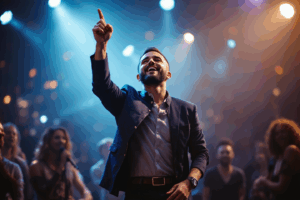




























 The English language is a vast and beautiful expanse, offering rich means of expression and connection. Yet, navigating its complexities requires attention to detail and a willingness to engage with its nuances. The commonly misused words discussed herein represent just a fraction of the challenges English users face. By understanding and applying the correct usage of these words, we can enhance our communication, ensuring that our messages are received as intended.
The English language is a vast and beautiful expanse, offering rich means of expression and connection. Yet, navigating its complexities requires attention to detail and a willingness to engage with its nuances. The commonly misused words discussed herein represent just a fraction of the challenges English users face. By understanding and applying the correct usage of these words, we can enhance our communication, ensuring that our messages are received as intended. Language is not static; it evolves with us, reflecting changes in society, culture, and technology. As we continue to explore and master English, let’s approach it with curiosity and openness, embracing the learning process. Keep in mind that every mistake presents a chance to learn and advance in our language journey.
Language is not static; it evolves with us, reflecting changes in society, culture, and technology. As we continue to explore and master English, let’s approach it with curiosity and openness, embracing the learning process. Keep in mind that every mistake presents a chance to learn and advance in our language journey. Let us strive for clarity, precision, and understanding in all our communications. Let us be mindful of the impact our words can have, and choose them with care. Let us seek to use language not just as a tool for communication, but as a means to bring about positive change.
Let us strive for clarity, precision, and understanding in all our communications. Let us be mindful of the impact our words can have, and choose them with care. Let us seek to use language not just as a tool for communication, but as a means to bring about positive change. 